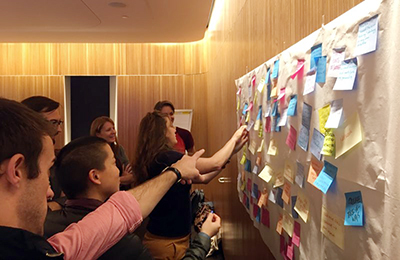by: Christina Hernandez and Shilpa Patel
WANTED: Government Architect
A government architect provides strategic, independent expert advice to the government about architecture and urban design, including advising on state and federal policies.
On 10.20.17, the fifth and final development session of the AIANY Civic Leadership Program, “Design and Leadership: Bridging the Gap Between Architecture and Policy,” highlighted three practitioners and leaders working to impact change in the regulation of the built environment, demonstrating the potential role architects can have in shaping public policy and legislation. All three embody the ideals of leadership within our profession, and thus, are representative of the government architect.
The session sought to learn from individuals who have devoted their efforts to establishing collaborations between the public, private, and civic realms, moving between “top-up” and “bottom-down” strategies to affect change. From organizing a campaign for a seat in local government to acting as an advisor to mayors across the country, the three speakers provided incredible insight into a body of work that goes beyond the traditional practice of architecture.
The first part of the development session encompassed speaker presentations and a lively follow-up discussion. Jess Zimbabwe, AIA, AICP, LEED AP, Director of Urban Development at the National League of Cities, spoke candidly on the need to define service and leadership within our profession. Brian Loughlin, Director of Planning and Urban Design at Magnusson Architecture & Planning, emphasized how architects can bring together state, capital, and public resources to make changes in their communities. Finally, Joseph Minuta, Principal and Founder of Minuta Architecture and candidate for Orange County Legislator, advocated for architects to devote their efforts to civic leadership and spoke of how the architectural skillset translates into civic work. Their stories provided an understanding of how we as architects can draw on the parallels and intersection of architecture and public policy to impact change.
During the second half of the development session, the ten CLP candidates worked together to develop a framework for continued civic leadership. Through a series of exercises, they brainstormed future initiatives and goals for the Civic Leadership Program. Over the past six months, the Civic Leaders have learned from a broad and distinct group of individuals leading the way in the civic realm and have been trained in topics ranging from community engagement to resiliency. Moving forward with great enthusiasm, their goal is to synthesize this information and turn passion into action within their own communities.









